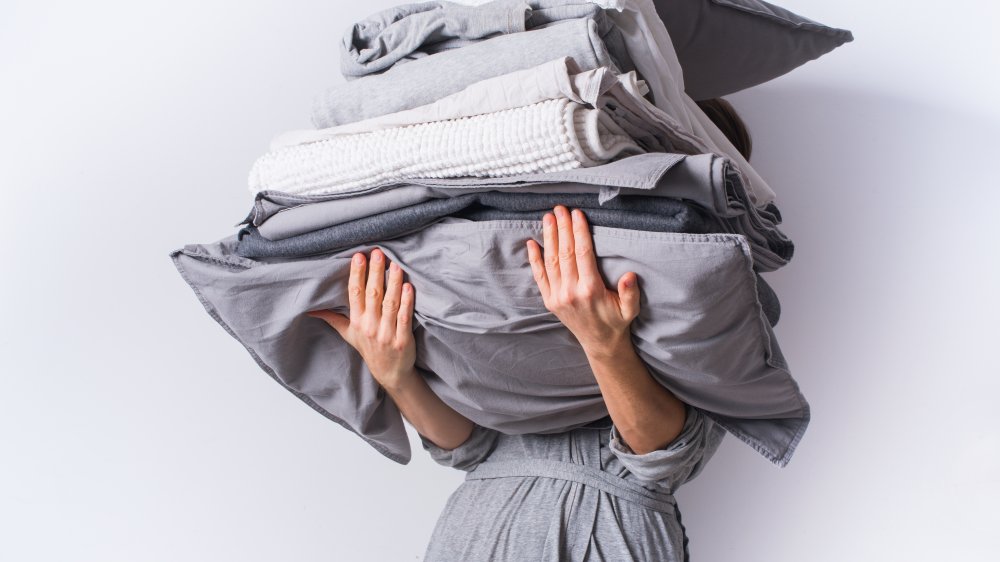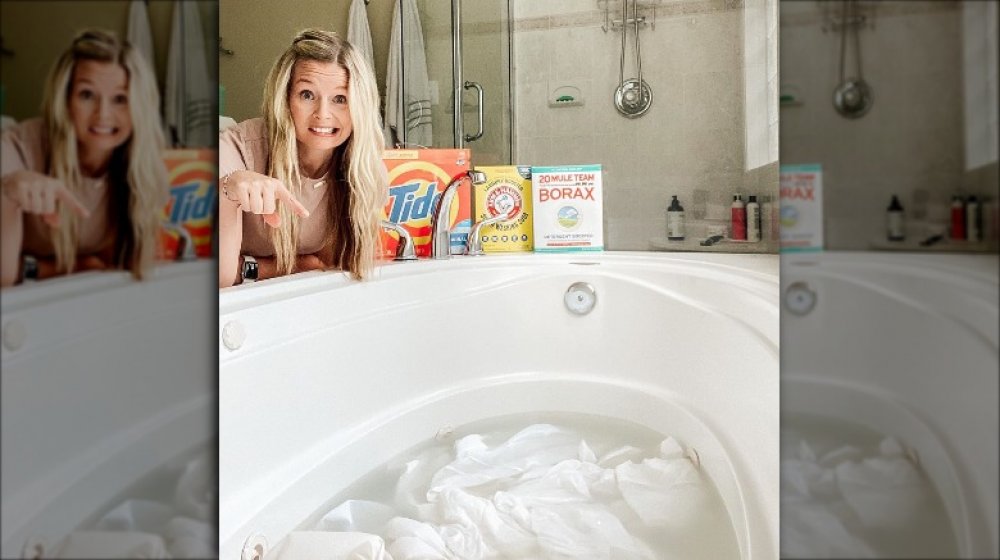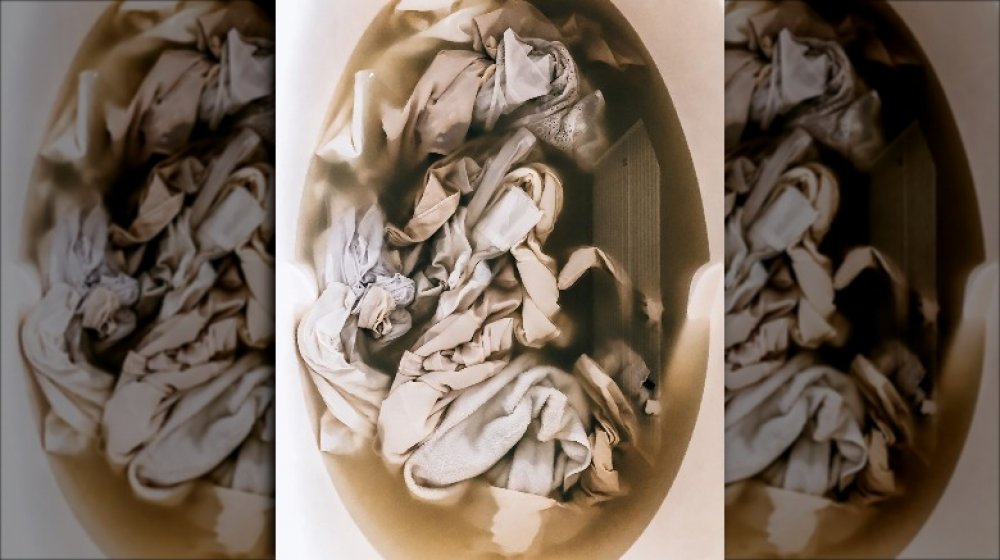The Truth About Laundry Stripping
Among the many questions one Instagrammer gets when she shares stories with graphic proof the excessive amount of dirt that comes out of her laundry after stripping it, is this common one: "Are you generally a trash human who lives in a garbage dump?" No, she assures her followers, "we're actually super clean and tidy. So this was a humbling experience" (via Instagram).
And there you have it, the strange fascination and judgement about laundry stripping, summarized in one, online interaction. You might be positive that your freshly laundered sheets are cleaner than your local Motel 6. We dare you to strip your bedding. We triple-dog dare you.
If, for some reason, you're not already in on the trend, home cleaning valet Rosa Nogales-Hernandez describes laundry stripping as "a second chance" for your dirty clothes (via Better Homes & Gardens). A second chance to do what, exactly? In a nutshell, when you strip your laundry, you cleanse it of laundry soap and fabric softener residues, the minerals that it absorbs from the hard water coming out of your pipes, and your own body oils. You're giving it, in Nogales-Hernandez's words, a chance to "be as fresh and crisp like it's the very first wash."
Be prepared for grossness and be selective when laundry stripping
First, some ground rules. Don't strip your laundry if you can't bear the sight of muck floating in a brown-grey puddle in your bathtub (or whatever container you chose to strip your laundry in). We're not kidding. If you take the leap into the laundry stripping world, you've got to be prepared to face obnoxious amounts of grime coming out of what you thought were perfectly clean linens (via Good Housekeeping).
You'll also want to be selective about the laundry that you put through the stripping process. Taste of Home suggests that sheets and towels are great candidates because you use them daily and wash them often, so they're bound to absorbed plenty of detergents and body oils.
Delicate linens, on the other hand, or any clothes that need a cold wash should categorically not be stripped. That's because laundry stripping is not a delicate process, and can "prematurely age and damage clothes," according to Tide laundry detergent scientist Mary Begovic Johnson (via Better Homes and Gardens). Along the same lines, if you've got very colorful items, maybe save them from the stripping process, as it can cause your dyes to run. Finally, for the same reason, avoid mixing colors and whites when you strip your laundry so that you don't end up with tie-dyed duvet covers (via Real Simple).
How to strip your laundry the right way
Are your towels lacking their full drying power? Do your whites look a bit grungy? Do your sheets smell funky? Those are prime signs its time to strip them.
Get out your Borax, washing soda (sodium carbonate), and powdered laundry detergent. Better Homes and Gardens suggests a detergent without dyes or fragrances and preferably with enzymes for the deepest possible clean. A bathtub, a large bucket, or a top-loading washing machine will all work well. Whatever container you choose, fill it with very hot water. Pour in one part borax, one part washing soda, and one part laundry detergent, adjusting quantities according to container size (via Real Simple). Using a bathtub? Taste of Home suggests 1/4 cup borax and washing soda, and 1/2 cup detergent. For a five-gallon tub, Better Homes and Gardens recommends 1/2 tablespoon borax and washing soda, and 1 tablespoon detergent. Stir your water to dissolve the detergents.
Now, add your laundry, it doesn't matter if it's wet or dry (via Real Simple). Let it soak for between four to five hours, stirring occasionally. Finally, rinse it in your washing machine (no detergent needed). That's it! If it sounds like a pain, remember, you should only strip your laundry once a month, according to Nogales-Hernandez.


